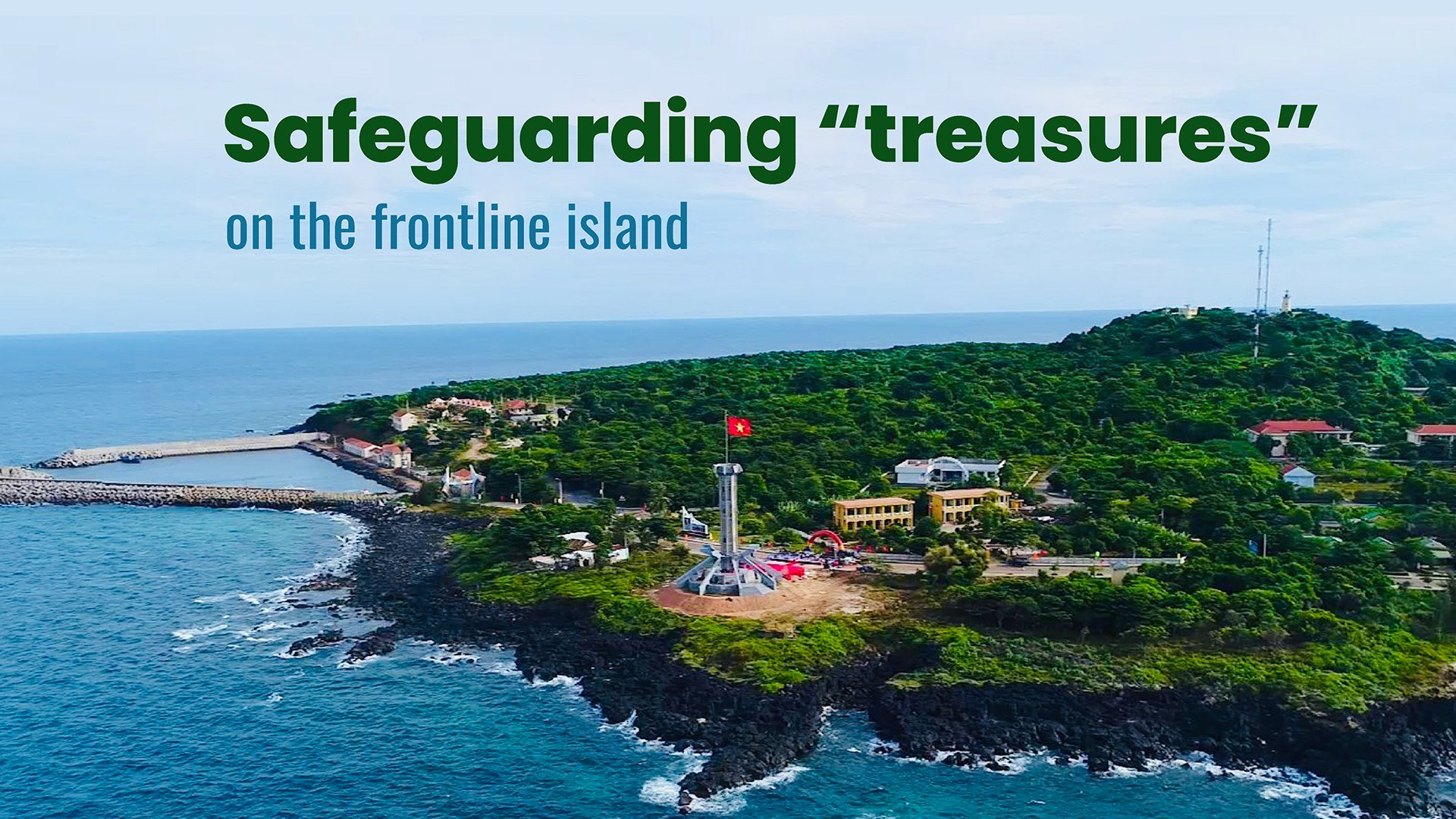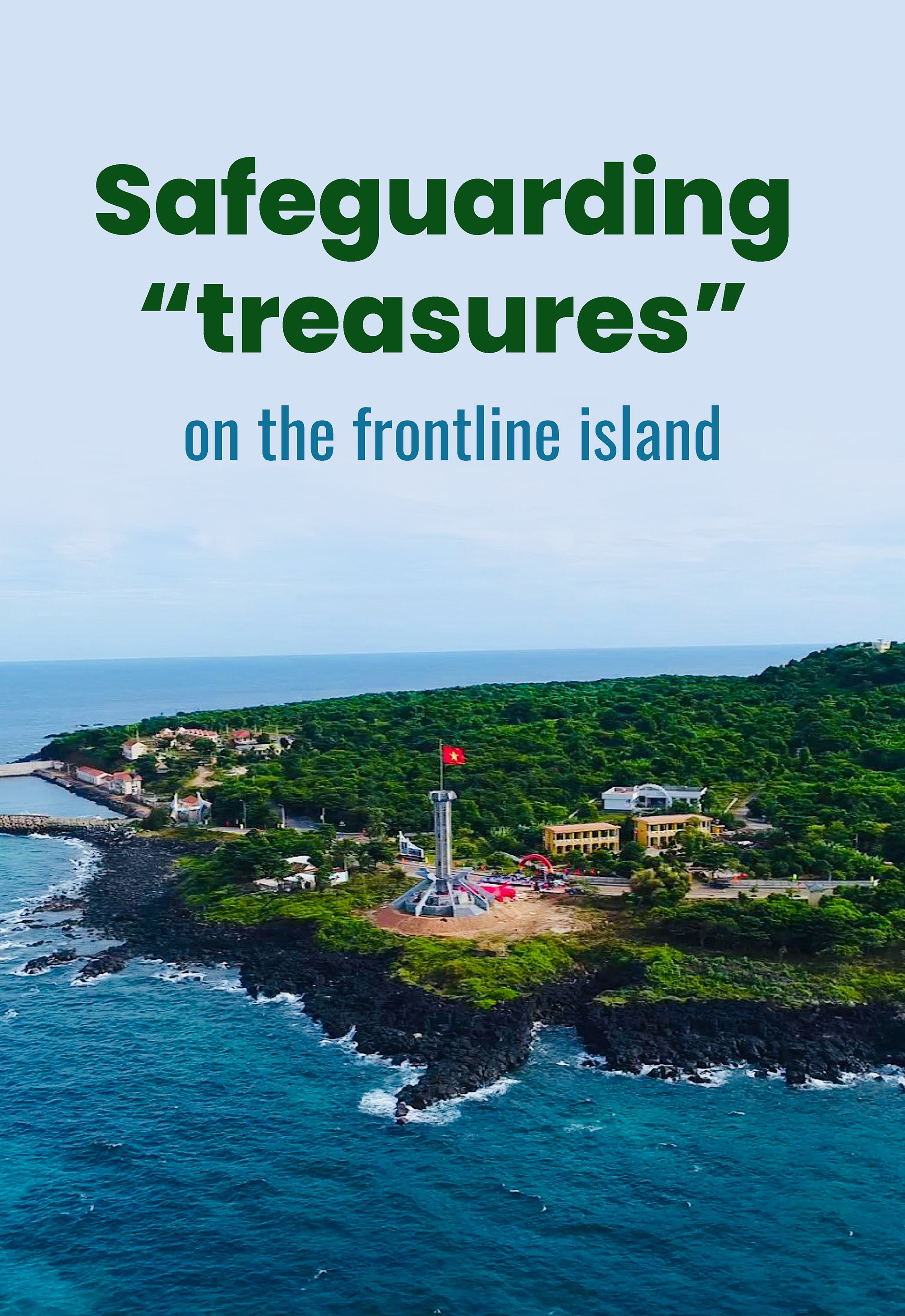
Established in October 2009, the Con Co Island Marine Protected Area lies at the southern gateway to the Gulf of Tonkin, covering a total area of 4,532 hectares. The protected area includes a strict protection zone of 534 hectares (where all forms of fishing and aquaculture are prohibited), an ecological restoration zone of 1,392 hectares (also closed to all fishing and aquaculture activities), and an administrative and service zone covering 2,376 hectares (where fishing and aquaculture are permitted with authorization from competent state authorities).
The inner buffer zone is a 230-hectare floating island, while the outer buffer zone, with a width of 300-500 meters, extends beyond the boundary of the administrative and service zone, where fishing and aquaculture are permitted with authorization from competent state authorities.
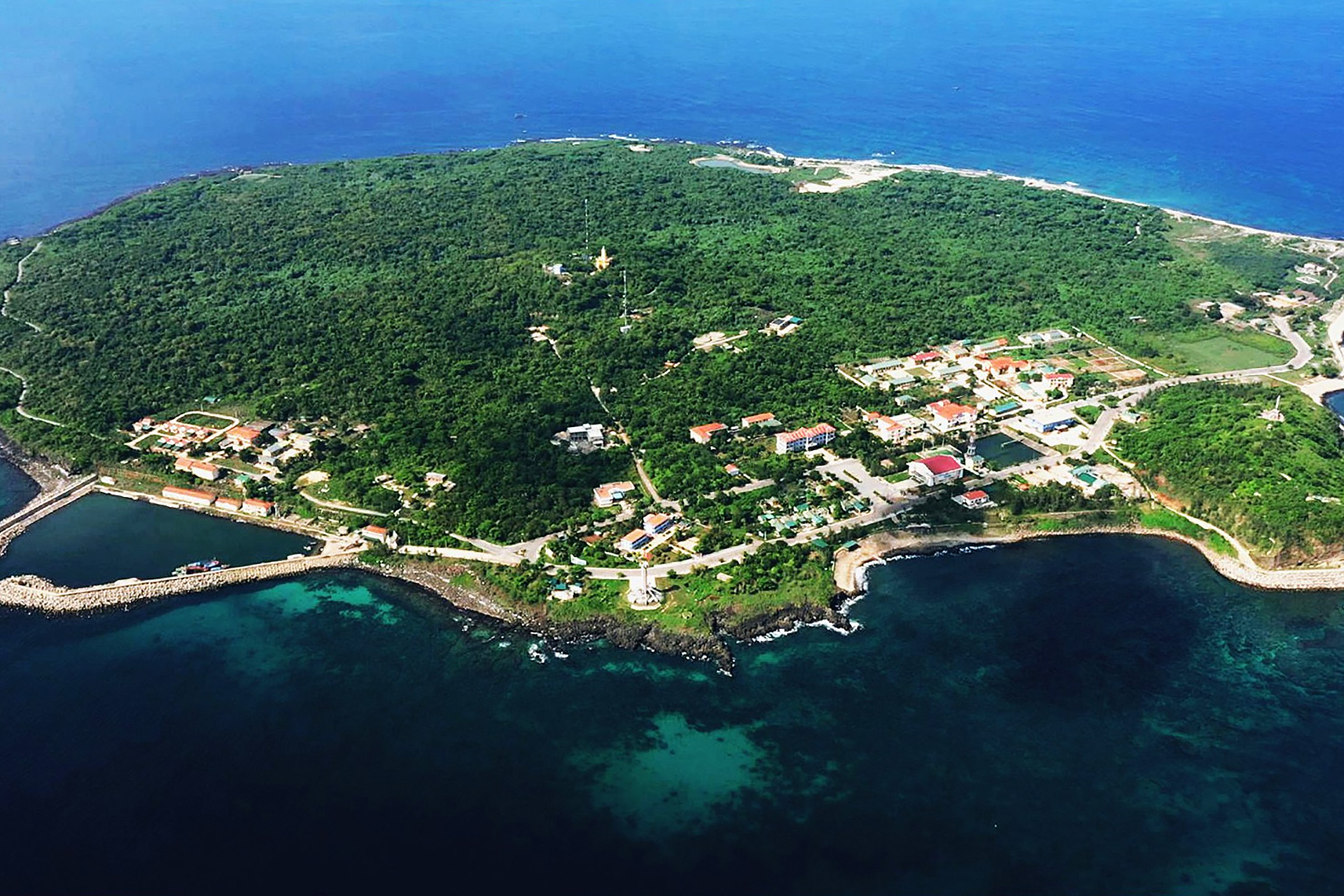
The Con Co Island Marine Protected Area is one of Vietnam’s marine protected areas with high biodiversity, featuring typical ecosystems of tropical seas such as coral reefs, seagrass beds, and various endemic fish species of high economic value. According to survey and research results, the protected area is home to approximately 224 fish species out of a total of 960 species recorded in the Gulf of Tonkin, including 49 species with high economic value. The area also possesses 113 species of hard coral, 56 species of seaweed, 46 species of benthic animals, 20 species of crustaceans, 87 species of coral reef fish, 164 species of phytoplankton, and 68 species of zooplankton, as well as rare species such as dolphins and sea turtles. Notably, the protected area is a habitat for rare marine species of high economic value, like the giant coxcomb oyster (Hyotissa hyotis). The coral reefs here are evaluated as well-preserved, ranking just after those of Phu Quoc, Con Dao, Hon Mun, and Cu Lao Cham.
Experts assessed the Con Co Island Marine Protected Area as a place to keep oceanic “treasures,” as it serves as a habitat for numerous marine species, including many rare ones in need of protection. Thus, conserving biodiversity in the Con Co Island Marine Protected Area is an urgent and vital task in Vietnam’s current marine conservation work.
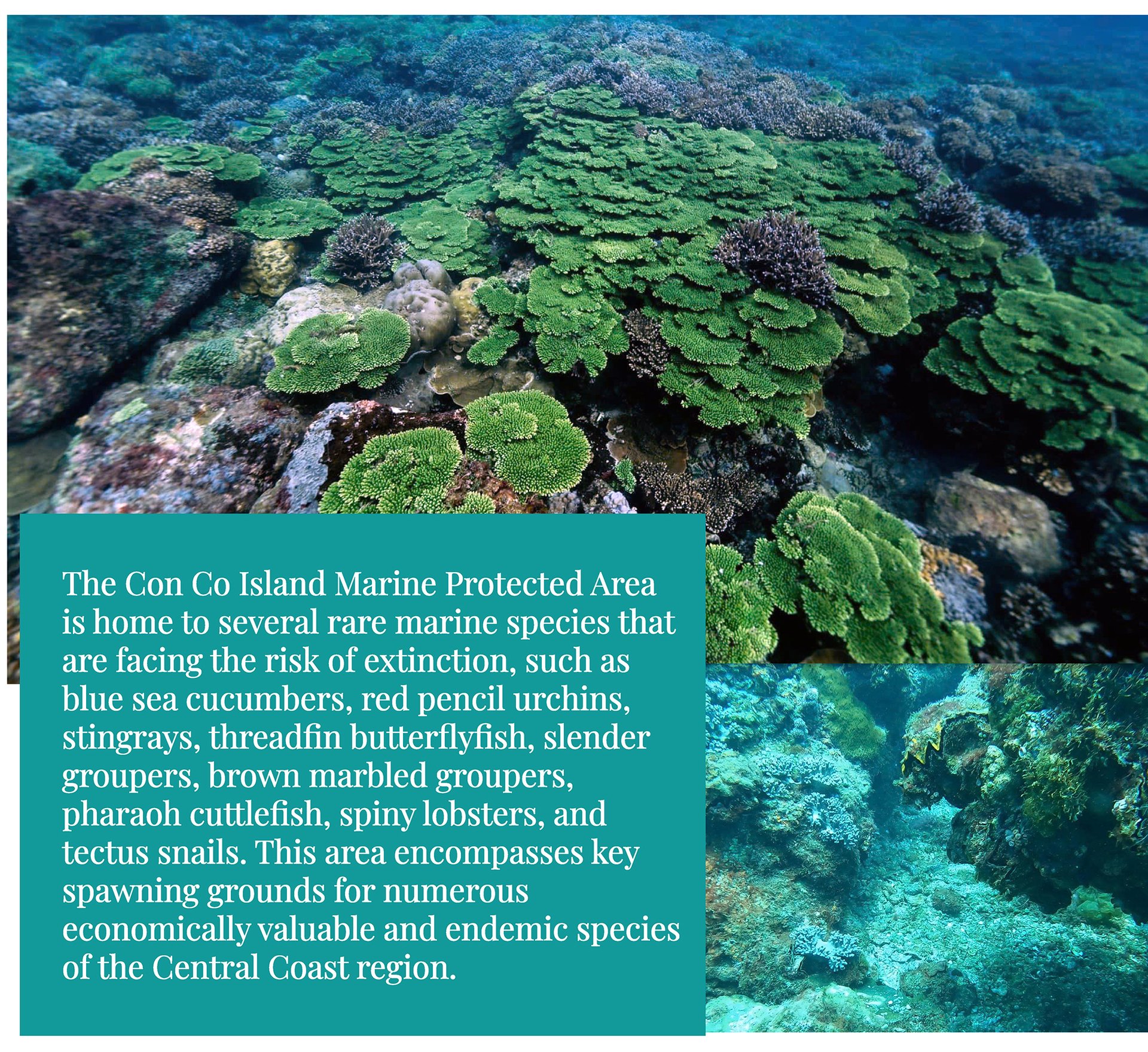

According to the report by the Con Co Island Marine Protected Area Management Board, the total area of coral reef, seagrass bed, and mangrove ecosystems under its management is 4,532 hectares. However, annual funding for conservation activities remains limited and relies primarily on the state budget. Resources from other programs are insignificant, resulting in limited implementation of large-scale action programs. For instance, activities such as mangrove forest replanting or artificial coral reef release have not been carried out at the Con Co Island Marine Protected Area from 2020 through mid-April 2024. But, with the spirit of overcoming difficulties, the Con Co Island Marine Protected Area Management Board and volunteers have continued to make every effort to implement other conservation activities.
In January 2023, the Management Board was assigned to lead a provincial-level independent scientific research topic titled “Research on the conservation, management, and sustainable exploitation of the giant coxcomb oyster (Hyotissa hyotis Linnaeus, 1758) at the Con Co Island Marine Protected Area.” However, the success rate of artificial seed production and commercial aquaculture of this natural oyster species was low. To avoid risks and waste of budget resources, the Management Board submitted a proposal to the Quang Tri Department of Science and Technology (now the Department of Science, Technology and Communications) requesting partial suspension of the topic, which was subsequently approved. The remaining components of the topic have still been carried out and yielded satisfactory results.
On an annual basis, officials who also serve as divers from the Con Co Island Marine Protected Area Management Board conduct diving-based monitoring of coral reefs and the seabed. Due to limited human resources and inadequate equipment, monitoring activities are confined to the observation and supervision of abnormal reef phenomena such as coral bleaching, large-scale reef breakage, great disturbances in bottom sediments, and the growth of endemic seaweed and seagrass beds within the protected area. Annual monitoring results indicate no signs of coral bleaching in the strict protection and ecological restoration zones. From September of the previous year to February of the following year, bleaching was observed in some hard coral species, but the rate was very low. No large-scale reef breakage or sediment disturbance has been recorded. Some endemic seaweed species on Con Co Island, such as sea grapes and Sargassum, continue to follow the normal seasonal growth and decay cycle. However, there has been a decline in seaweed species over the past two years, the cause of which remains unknown.
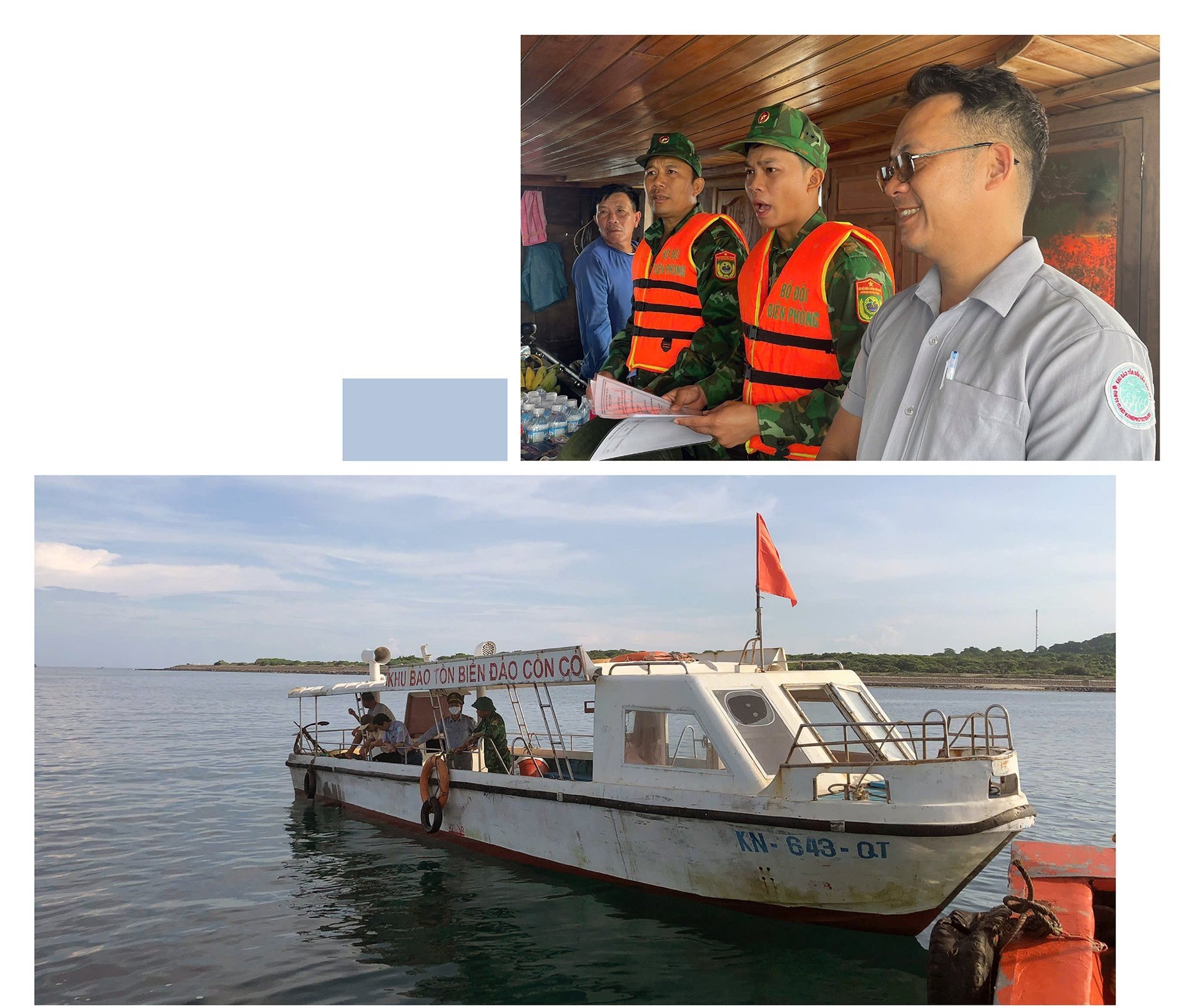

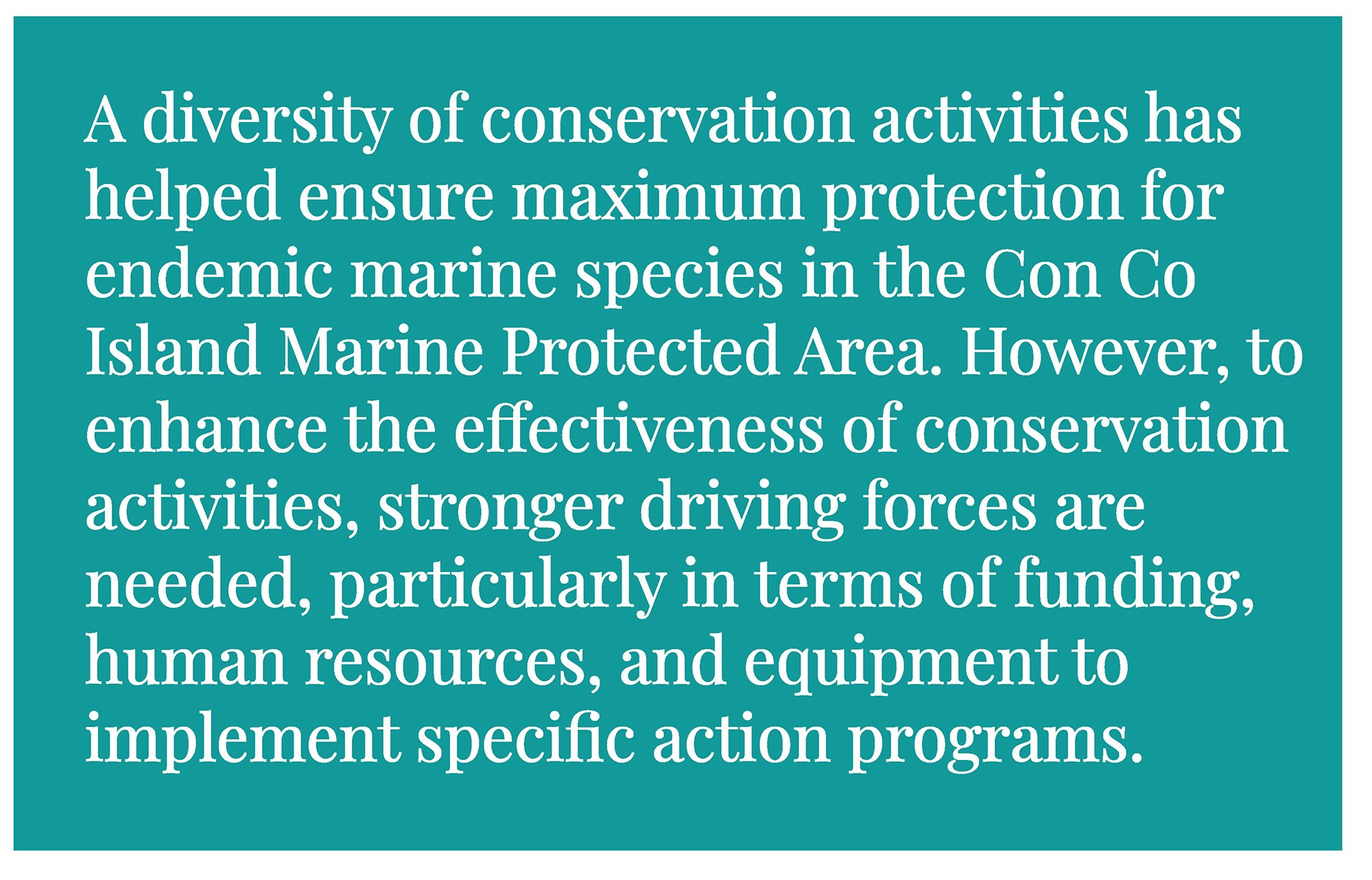

According to scientific research, sea turtles have existed on Earth for 250 million years. This animal species is regarded as one of the indicators of ocean health.
In the past, all five species of sea turtles, including the green sea turtle, hawksbill turtle, olive ridley turtle, loggerhead turtle, and leatherback turtle, were distributed widely across Vietnamese waters. However, their population has currently declined significantly due to both intentional and accidental human activities. Many sea turtles were entangled in “ghost nets” on the ocean floor, leading to injury or death. Plastic waste pollution, the construction of anti-erosion embankments, and increasingly bustling economic activities along coastal areas have inadvertently reduced the habitats and nesting grounds of sea turtles. As a result, sea turtles are now facing a high risk of extinction due to a steady population decline in recent years.
However, in recent years, the number of sea turtles has shown signs of recovery along the Quang Tri coastline and within the Con Co Island Marine Protected Area. This outcome is the result of the implementation of the Quang Tri Provincial People's Committee’s Sea Turtle Conservation Plan for the 2019–2025 period. In recent years, the plan has been effectively executed in Quang Tri province and has achieved certain positive results.
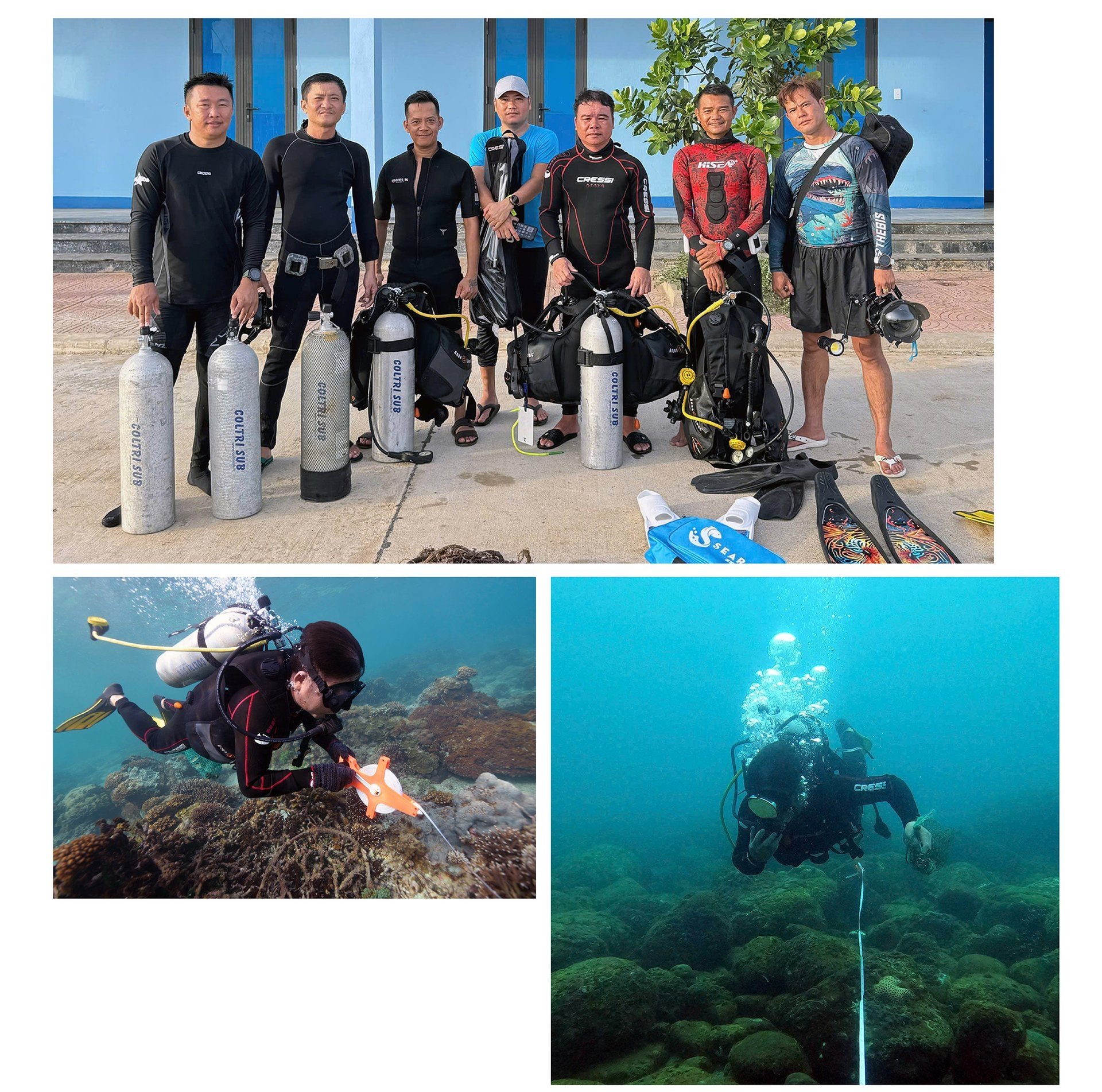
According to Mr. Tran Khuong Canh, Deputy Director of the Con Co Island Marine Protected Area Management Board, these results have been achieved partly thanks to a significant improvement in public awareness of conservation. In addition, the efforts by the Management Board to protect this rare marine species have also yielded positive results. In recent times, the killing of sea turtles in Quang Tri province has virtually disappeared. Volunteers have not only participated in rescuing sea turtles but have also conducted communication activities to raise awareness among local fishermen about the conservation of this rare animal species. According to the plan, Quang Tri province will soon designate specific coastal areas as nesting grounds for sea turtles.
“The increasing presence of sea turtles is an indication that the marine environment in Quang Tri province has significantly improved in recent years. This is the result of a persistent journey of the Con Co Island Marine Protected Area’s members and volunteers,” shared Mr. Tran Khuong Canh, Deputy Director of the Con Co Island Marine Protected Area Management Board.
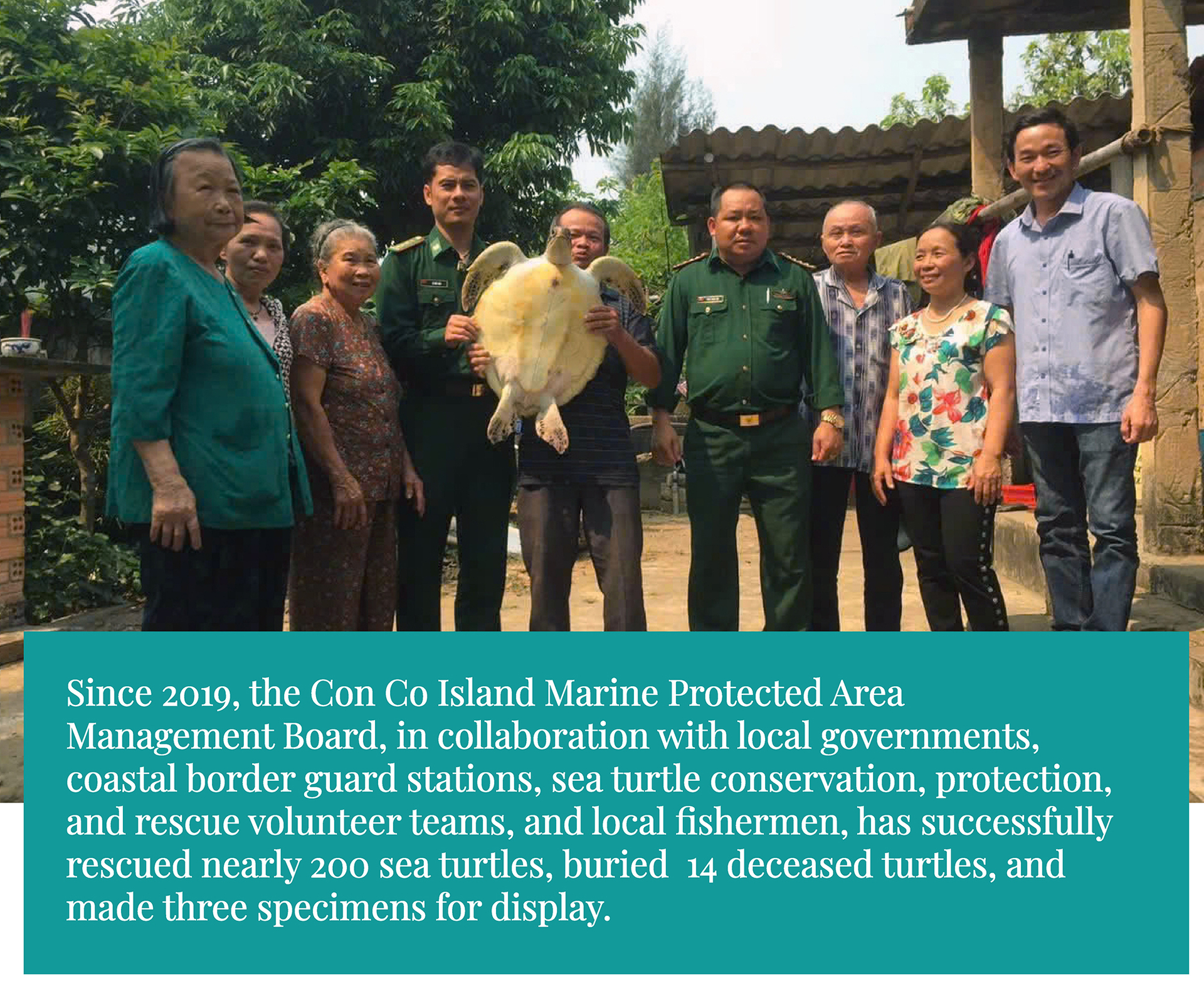

Before becoming a special zone on July 1, 2025, Con Co was an island district of Quang Tri province, with an area of 2.3 square kilometers and a population of around 250 residents. Despite its modest size, Con Co Island holds a particularly important strategic position in the sea and island strategy, serving as a frontline island for protecting national sovereignty. During the struggle for the liberation of the South and national reunification, Con Co Island was a key target of enemy bombardment. It was once known as an 'impenetrable fortress' and a 'steel battleship that never sank in the East Sea.'
The planning of Con Co as a special zone is not merely an administrative adjustment but also opens up opportunities and space for breakthrough development on the island. Con Co will be facilitated to fully exploit its geographical advantages to boost maritime transportation, fishing and aquaculture, fishery logistics services, and especially marine and island tourism. With its pristine beaches, clear blue waters, rich coral reefs, over 70% of its land area covered by primary forests, and remnants of its heroic history, Con Co is gradually becoming an attractive destination on Vietnam’s tourism map. Ecotourism activities such as scuba diving to explore coral reefs and trekking through coastal forests hold a development potential here.
However, the Con Co Island Marine Protected Area is facing many challenges stemming from fishing and exploitation activities carried out by local fishermen. Violations in seafood exploitation continue to occur annually. After 10 years of implementing Directive No. 19/CT-TTg dated July 30, 2014, issued by the Prime Minister, the Protected Area Management Board has handled 19 administrative violation cases, collecting fines totaling more than VND 170 million. No criminal cases have been recorded. According to the Management Board’s report, some fishing vessels, including unregistered vessels both within the province and from neighboring provinces, have covertly entered functional zones of the protected area at night to illegally dive for aquatic resources. However, the Management Board has only one small, lightweight patrol boat, which poses significant difficulties and dangers when approaching much larger violating vessels. The patrol boat is unable to operate at night or during bad weather conditions with northeast or southwest monsoons reaching level 5 or higher, severely affecting patrol effectiveness.
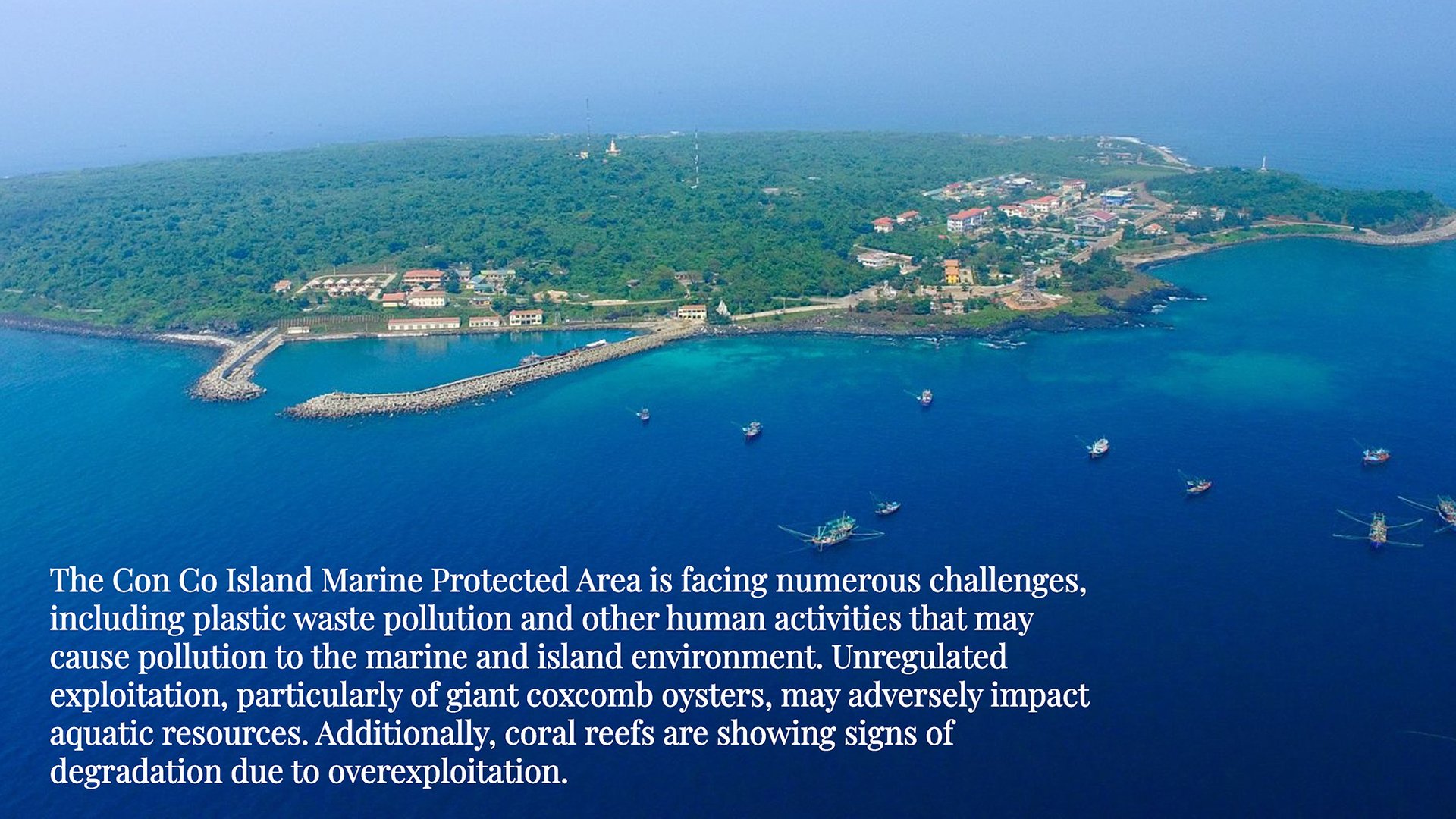
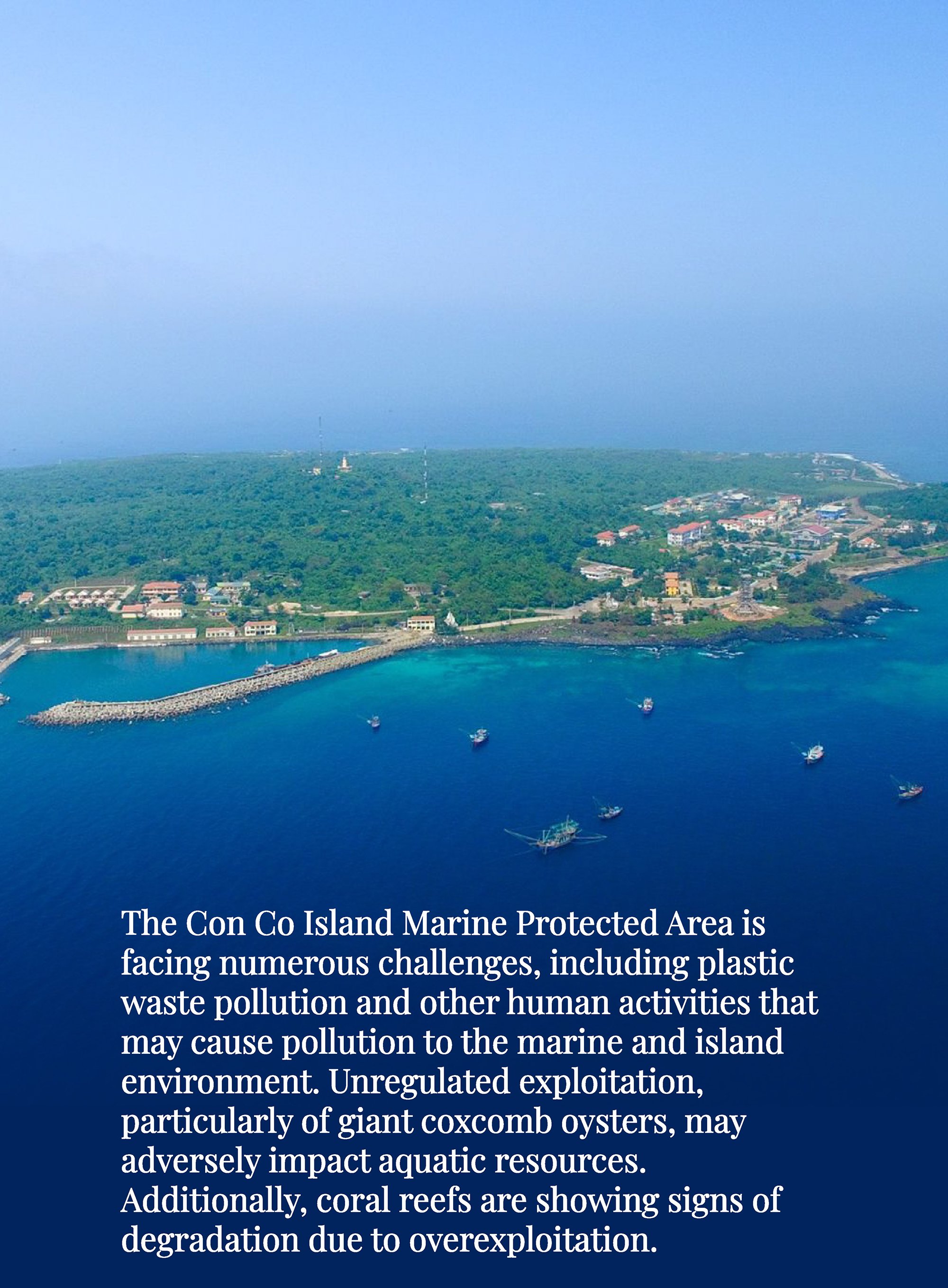
In response to these challenges, the Con Co Island Marine Protected Area Management Board has proposed that the Quang Tri Department of Agriculture and Rural Development (now the Department of Agriculture and Environment) submit to the Provincial People's Committee a plan to invest in the construction of a new modern steel-hull patrol vessel. In addition, the Management Board has requested the Quang Tri Provincial People's Committee to submit to the Central Government and the Ministry of Planning and Investment (now the Ministry of Finance and Economic Development) to include in the medium-term public investment plan for the 2021–2025 and 2026–2030 periods a project to build a new administrative headquarters and a Center for Communication and Community Development for the Con Co Island Marine Protected Area on the Con Co island district (now the Con Co Special Zone).

Mr. Tran Khuong Canh, Deputy Director of the Con Co Island Marine Protected Area Management Board, stated that conservation work can be more effective if the value of tourism tours is developed and promoted. In fact, while several experiential tours have already been introduced on Con Co Island, their full potential remains untapped. Tourists themselves can become "ambassadors" for environmental protection and marine ecosystem conservation. Revenue from tourist activities can also be considered a socialized source that contributes to the current marine conservation work.
According to Mr. Canh, Con Co Island currently has the potential to develop diving, swimming, and coral reef watching tours. The most accessible level is a glass-bottom boat tour, allowing tourists to view coral reefs at depths of 4–5 meters. This depth is rich in coral with clear waters, suitable for a wide range of tourists from children to the elderly. There is currently strong demand for this type of experiential tourism. A higher level is scuba diving to observe coral reefs, which can be combined with activities such as collecting ghost nets and plastic waste as part of environmental protection efforts. Other engaging options include recreational fishing, participating in traditional seafood harvesting, or joining squid fishing with local fishermen. Con Co Island also has numerous historical relics that are witnesses to the nation’s heroic past during the Patriotic War. The surrounding waters also offer a wealth of marine specialties that attract tourists.
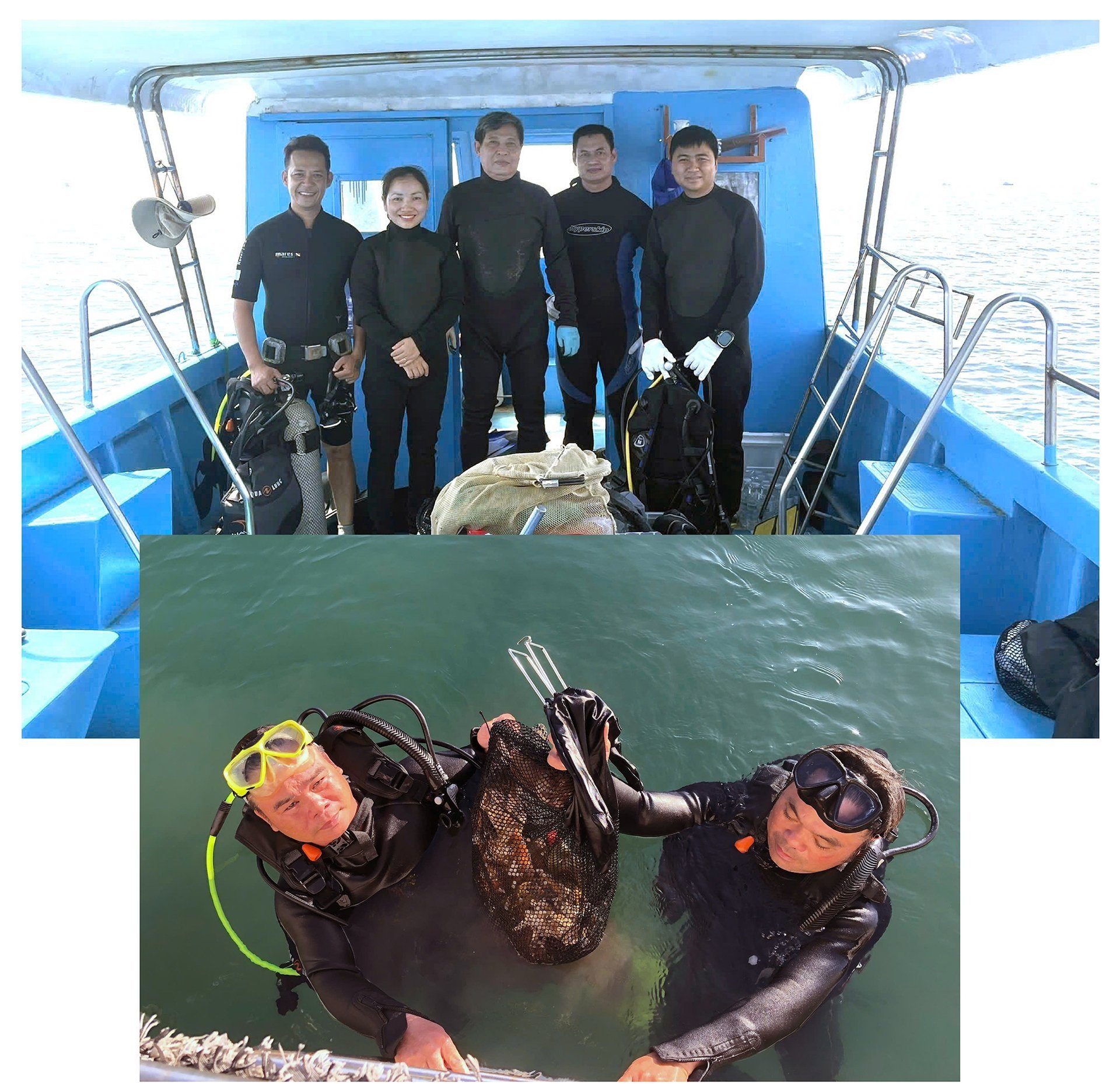

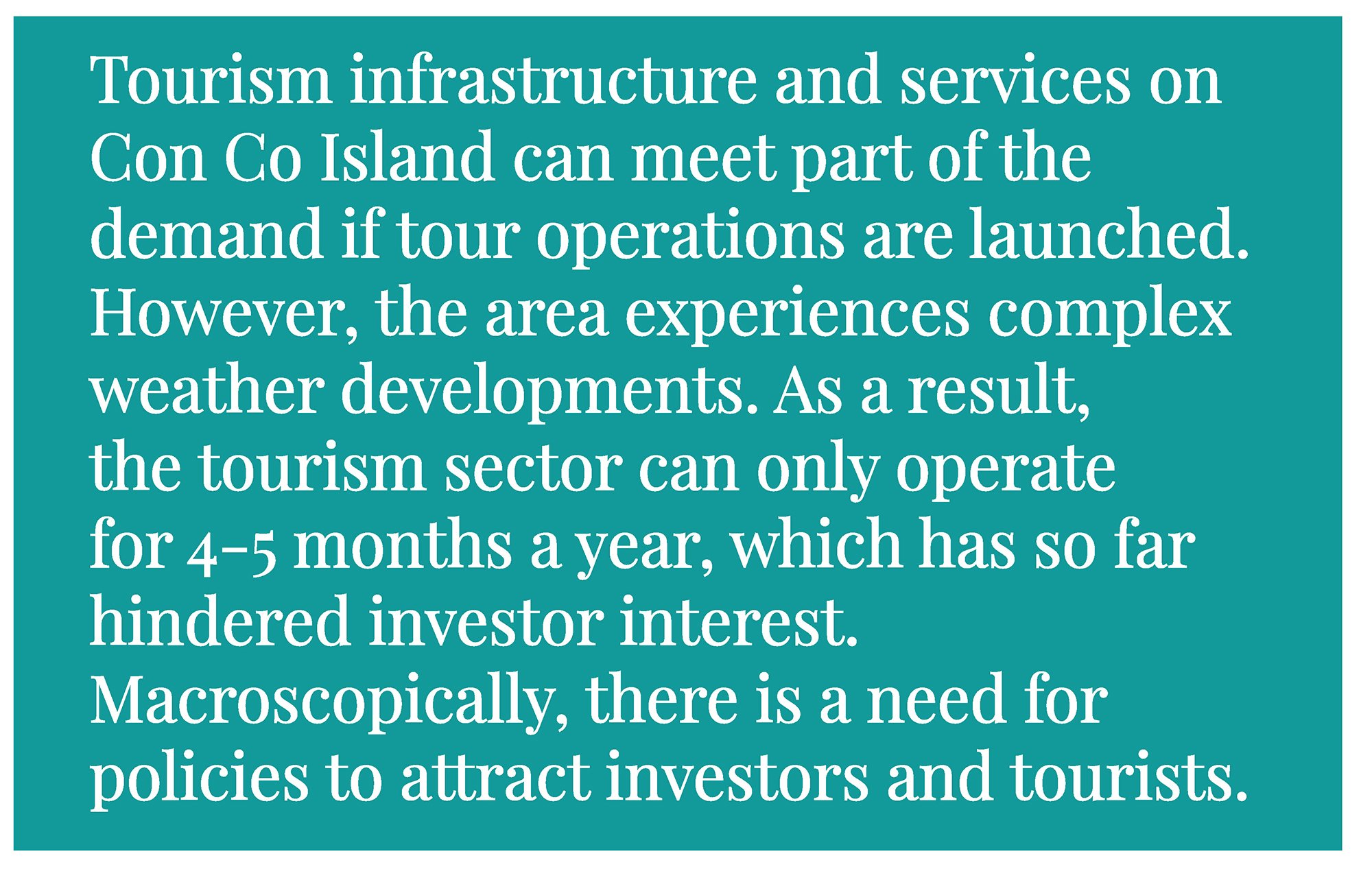
Con Co Island is currently home to only about 250 people, including both military personnel and civilians, yet existing tourism services can meet tourists’ demands for dining and experiential activities. The Con Co Island Marine Protected Area Management Board has also developed and is currently implementing a comprehensive biodiversity survey project. This project will provide updated data and adjust the boundaries and area of the protected zone to ensure the harmony between conservation, exploitation, and the development of marine tourism. This will create conditions for tourism development closely integrated with biodiversity conservation.


